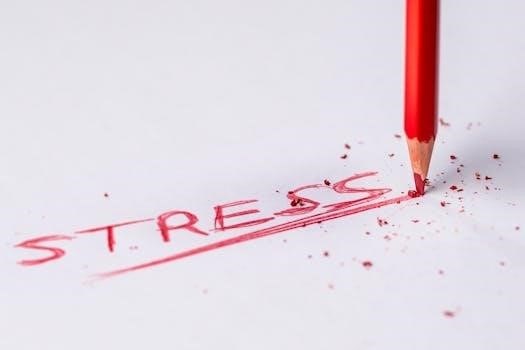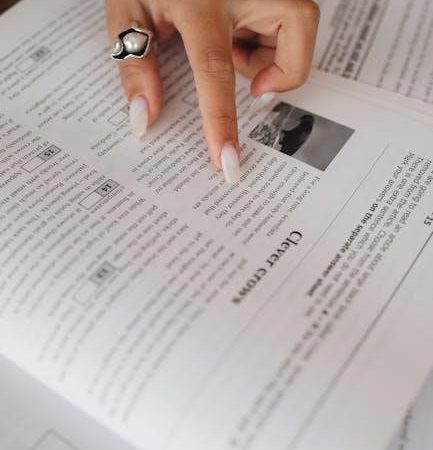a short guide to writing about art

Writing about art is a challenging endeavor, demanding careful observation, deep research, and thoughtful analysis to effectively convey both visual presence and artistic intention․
Why Writing About Art Matters
Writing about art matters because it bridges the gap between the artwork and the audience, fostering deeper understanding and appreciation․ It allows us to articulate the often-intangible qualities of art, translating visual and emotional experiences into accessible language․ By engaging in art writing, we delve into the artist’s intention, exploring the context surrounding the creation and uncovering layers of meaning that might otherwise remain hidden․
Furthermore, writing about art encourages critical thinking and cultivates a more informed perspective․ It prompts us to analyze the visual elements, interpret symbolic representations, and consider the artwork’s impact on society․ This process enriches our own understanding and empowers us to engage with art in a more meaningful way․ Ultimately, art writing is a powerful tool for promoting cultural awareness and fostering a vibrant dialogue around creative expression, making art accessible and relevant to a wider audience․
Setting the Stage⁚ Approaching Art with Words
Approaching art with words requires a shift in perspective, moving beyond mere observation to thoughtful articulation․ Begin by immersing yourself in the artwork, allowing your senses to guide your initial response․ Note the details that stand out – the colors, textures, shapes, and composition․ Avoid art jargon and instead, focus on describing what you see in clear, precise language, using visual and tonal descriptors․
Next, consider your personal reaction․ How does the artwork make you feel? What thoughts or memories does it evoke? Don’t be afraid to explore your emotional connection, as this can provide valuable insights․ Finally, remember that writing about art is a process of discovery․ Be open to new interpretations, embrace ambiguity, and allow your words to evolve as you delve deeper into the artwork’s essence․ This sets the stage for meaningful analysis․
Understanding the Artwork
To truly write effectively about art, one must first understand the artwork itself through careful observation, analysis of visual elements, and consideration of the artist’s intent․
Describing the Visual Elements
Begin by meticulously detailing the artwork’s visual elements․ Use specific adjectives to capture the essence of the piece, avoiding vague art jargon․ Consider the artwork’s composition⁚ how are the elements arranged? What is the dominant color palette, and how does it contribute to the overall mood? Describe the use of line, shape, texture, and form․ Is the artwork realistic, abstract, or somewhere in between?
Pay attention to the details that might be easily overlooked․ Are there subtle variations in color or texture? How does the light interact with the surface of the artwork? Note the scale of the artwork, and how it impacts the viewer’s experience․ By providing a thorough and detailed description, you create a strong foundation for further analysis and interpretation․
Analyzing the Artist’s Intention
Delving into the artist’s intention requires careful consideration and research․ What message or emotion was the artist trying to convey? Consider the historical and cultural context in which the artwork was created․ Was the artist responding to specific events or movements? Research the artist’s life and other works to identify recurring themes or motifs․
Look for clues within the artwork itself․ Are there symbols or allegories present? How do the visual elements contribute to the overall meaning? Consider the title of the artwork⁚ does it provide insight into the artist’s intention? While it’s impossible to know the artist’s true intention with certainty, a thoughtful analysis can reveal potential interpretations and deepen your understanding of the artwork․

Developing Your Writing
To enhance your writing, research thoroughly and contextualize your observations․ Embrace personal responses, integrating interpretations and perspectives to enrich your analysis of the artwork․
Research and Contextualization
Delving into the historical, cultural, and artistic context is vital for insightful art writing․ Thorough research provides a foundation for understanding an artwork’s deeper meanings and significance․ Explore the artist’s biography, influences, and the prevailing artistic movements of their time․ Uncover the social and political climate in which the artwork was created, as these factors often shape the artist’s vision and message․
Consult scholarly articles, art historical texts, and museum catalogs to gain a comprehensive understanding of the artwork’s place within art history․ Consider the artwork’s original purpose and audience, and how its reception has evolved over time․ Investigate the materials and techniques used by the artist, as these can provide clues about their artistic process and intentions․ By contextualizing the artwork within its broader historical and cultural framework, you can enrich your analysis and offer readers a more nuanced perspective․
Remember to cite your sources properly and give credit to the scholars and researchers whose work has informed your understanding․
Personal Response and Interpretation
While research provides a foundation, your unique perspective adds depth to art writing․ Engage with the artwork on a personal level, reflecting on your emotional and intellectual responses․ What feelings does the artwork evoke? What ideas does it provoke? How does it connect with your own experiences and beliefs?
Your interpretation should be grounded in evidence from the artwork itself, as well as your research and contextual understanding․ Avoid making unsupported claims or relying solely on subjective opinions․ Instead, use your personal response as a starting point for exploring the artwork’s potential meanings and significance․
Consider the artist’s intentions, but also acknowledge the possibility of multiple interpretations․ Artworks are often open to different readings, and your perspective can contribute to a richer understanding of their complexity․ Be honest and authentic in your writing, sharing your own insights and observations while respecting the perspectives of others․ Remember, your personal response is a valuable tool for connecting with readers and inviting them to engage with the artwork on a deeper level․

Crafting Your Text
Effective art writing requires careful attention to language and structure․ Choose precise words, establish a clear argument, and guide your reader through your analysis with logical flow․
Choosing the Right Language and Tone
Selecting the appropriate language and tone is paramount in art writing․ Strive for clarity and precision, avoiding art jargon that might alienate your audience․ Be specific in your descriptions, using both visual and tonal descriptors to paint a vivid picture of the artwork․
Consider your audience and the purpose of your writing․ Are you writing for an academic journal, a general audience, or an artist statement? Adjust your tone accordingly, maintaining professionalism and respect for the artwork and artist․
Descriptive adjectives are your allies․ Create a list to expand your vocabulary, and use them strategically to convey the artwork’s essence․ Honesty is key; express genuine opinions while remaining respectful and thoughtful․ Avoid being overly critical or dismissive․
Remember, your goal is to illuminate the artwork and enhance the viewer’s understanding․ Choose language that serves this purpose, fostering appreciation and engagement․
Structuring Your Argument
A well-structured argument is crucial for effective art writing․ Begin with a clear thesis statement that encapsulates your main interpretation or analysis of the artwork․ This serves as the guiding principle for your entire piece, ensuring focus and coherence;
Organize your writing logically, presenting your ideas in a sequential manner that builds upon each other․ Consider using the artwork’s visual elements, the artist’s intention, or the historical context as frameworks for your argument․
Each paragraph should address a specific point, supporting your thesis with evidence from the artwork, research, or your own interpretation․ Use transitions to connect your ideas smoothly, creating a cohesive flow that guides the reader through your analysis․
Conclude with a summary of your main points and a restatement of your thesis, reinforcing your argument and leaving the reader with a clear understanding of your perspective․ A strong structure enhances clarity and persuasiveness․

Polishing Your Work
Polishing your work ensures clarity, coherence, and impact․ This vital stage involves careful editing and revision to refine your writing and strengthen your argument about the art․
Editing and Revision
Editing and revision are crucial for refining your art writing․ Begin by reviewing your work for clarity and conciseness, eliminating unnecessary jargon and awkward phrasing․ Ensure each sentence contributes meaningfully to your overall argument․
Check for grammatical errors, typos, and inconsistencies in style․ Read your text aloud to identify areas where the flow feels unnatural or confusing․ Consider asking a peer or mentor to provide feedback on your writing․
Pay close attention to the accuracy of your factual information and the strength of your supporting evidence․ Revise your arguments as needed to reflect a deeper understanding of the artwork and its context․ Finally, refine your conclusion to leave a lasting impression on the reader, solidifying your interpretation․

The Power of Art Writing
Art writing, when executed thoughtfully, transcends mere description, offering profound insights into artistic creation and its cultural impact․ It illuminates the artist’s vision, contextualizes the artwork within its historical and social milieu, and invites viewers to engage more deeply with visual expression․
Through meticulous analysis and eloquent prose, art writing fosters critical thinking, enhances appreciation, and bridges the gap between creator and audience․ By mastering the techniques outlined in this guide, aspiring writers can unlock the power of art to inspire, challenge, and transform perspectives․
Ultimately, effective art writing elevates art beyond the visual realm, transforming it into a catalyst for dialogue, understanding, and lasting cultural significance, leaving a profound mark on both the art world and society as a whole․



